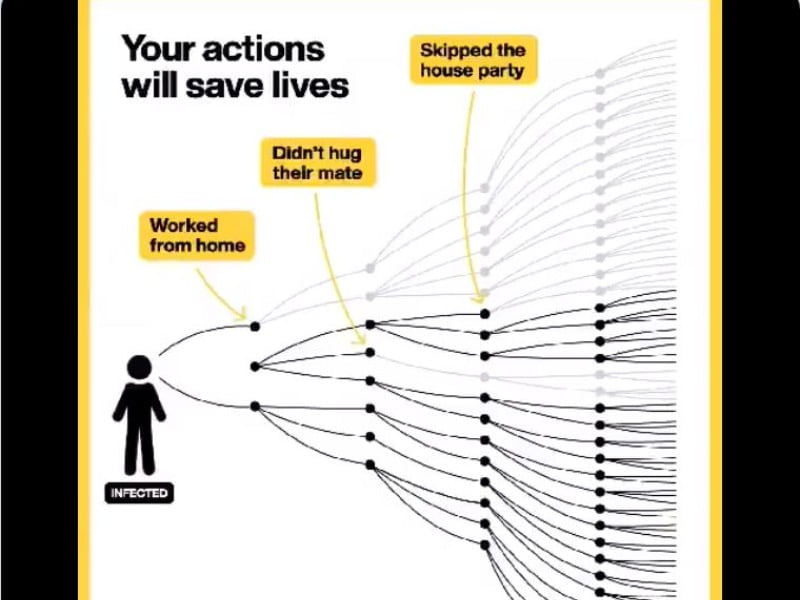The $30 million COVID-19 public awareness campaign run by the federal government has been a “failure” and needs to make better use of digital platforms and social media to get through to young Australians, according to an infectious disease expert.
In mid-March the government unveiled a $30 million ad spend to raise awareness of the coronavirus pandemic, with notices placed on television, newspapers and on Facebook and Instagram.
The creative for the campaign was completed under a contract worth nearly $500,000 by independent agency Carbon Media.

It included ads mainstream TV and full-page letters in newspapers from Prime Minister Scott Morrison, Health Minister Greg Hunt and Chief Medical Officer Brendan Murphy.
The first phase of the campaign featured government ads encouraging Australians to practice good hygiene and be on alert for symptoms. On Wednesday morning, the government began sending text messages to Australians with further information.
This included a warning to “stay at home if sick”, despite Mr Morrison the night before telling all Australians not to leave the home unless “absolutely necessary”.
But according to Bill Bowtell, an adjunct professor at the Kirby Institute for Infection and Immunity at the University of New South Wales and one of the designers of Australia’s response to the AIDS epidemic, the government isn’t doing nearly enough to communicate to young Australians, and the digital platforms campaigns need to be better.
“It’s far too little too late. The idea that an online campaign in words and not images, and not distributed through TikTok, Grindr, Instagram, Tinder and all these other platforms that young people use shows how far out of touch it is,” Mr Bowtell told InnovationAus.
“They’ve failed to comprehend what young people do and how they receive their information. It’s not online, it’s not on mainstream television – that’s not the way to do it and this campaign is not the way to do it,” he said.
“There’s been a failure to communicate. It was the messenger, not the message, that didn’t get through.”
Shadow assistant minister for cybersecurity Tim Watts also questioned the government’s advertising campaign, pointing out that the Coalition spent nearly five times as much on ad campaigns in 2018-19 alone.
“I haven’t seen any public information campaign on social distancing on Instagram or TikTok…is the sole communication channel with young Australians lectures from politicians on mediums and platforms they don’t use?” Mr Watts tweeted.
When sent a visual government ad appearing on Instagram, Mr Watts said that the ad wasn’t “going to inform, influence or persuade anyone”.
Instead of politicians being the face of the social distancing campaign, the government needed to be enlisting celebrities and influencers, Mr Bowtell said.
“People aren’t listening because the message is coming from Scott Morrison in a courtyard – there’s no person in Australia less suitable to talk to young people about this,” he said.
“When he blamed young people for being on Bondi Beach and got angry about it he sounded like a headmaster or a priest furious that the congregation wasn’t doing what he said.”
“They should be getting people who know what they’re doing, and talking to young people in a language they know and in their way.”
The latest stage of the campaign, which will see text messages sent to millions of Australians, will still not be enough, Mr Bowtell said.
“Why would anyone have faith in the people who have delivered this? Texts aren’t visual, 15 second grabs on TikTok. I’m not saying it’s a bad idea, but people get deluged with text messages,” he said.
“They need to get on the platforms that young people are on, so it’s not just 200 words of text by people they don’t know or trust. They have to do better.”
The consequences are serious if they don’t get the public awareness campaign right, he said.
“The impact is that we end up with a higher illness rate than we otherwise should have had. This should have started in January, like it did in Singapore and Taiwan,” he said.
Do you know more? Contact James Riley via Email.

